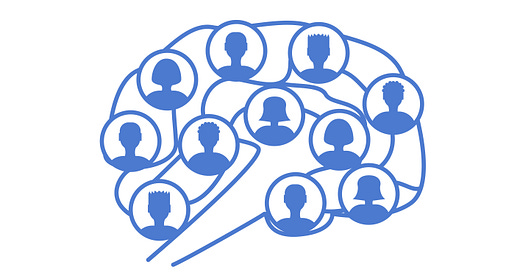Research Hit: New Insights into the Social Brain
New circuit for social "flocking" identified
Don’t tell me this research is in lab animals?
Yes it is. But this is the interesting bit, it’s in spiny mice.
In what type of mice?
Spiny mice live in arid environments in Africa. But their behaviour makes them particularly suitable for research into the social brain. Other rodents that have been used extensively for research are not as suitable because they may not live in social groups.
For example, the prairie vole has been used extensively in research and has given us insights into oxytocin as a bonding (also love or cuddle) chemical but they are also aggressive to other voles. The same applies to many mice and rats.
However, spiny mice live in large social groups and are welcoming to “strangers” - or at least non-aggressive - and approach peers much more readily
OK, and what did the researchers find?
Well the results may sound quite simple but they went through multiple processes to find out what was happening. First they identified active regions in the brain then enabled a chemical tracer to track neural circuits.
They found that a region called the Lateral Septum (LS) was heavily involved in prosocial behaviours. This region seems to be a multiple purpose region in different animals either activating aggression or the opposite, flocking behaviours. Here it seems to be activating flocking, social, behaviours, with strongest activation in the most social mice.
They then identified a circuit from a region called the Anterior Cingulate Cortex (ACC) which also operates as an attention centre but is involved in multiple other processes.
And is this circuit controlling this social behaviour?
Yes, it seems to be, because interestingly they then investigated shutting this circuit down chemically and lo and behold, when deactivated, mice searched out smaller rather than larger groups and became less social. They also were less likely to approach stranger mice - their “social boldness” therefore also decreased.
The researchers were surprised at how large the effect was - often in these type of experiments there is an effect but it is not large - not so here.
They also investigated attitude to inanimate objects (rubber ducks!) to see that it was only social.
And would this be the same in human beings?
That will be future investigation but it does gives us new clues - a lot of this research in animals has translated into human beings (but not all).
I wrote a review of what we know on the social brain (at that time) a few years ago and it is still relevant:
Well, my AC - LS seems to turn on and off.
Ahh, a social/non-social person. Yes, that is also possible and I would be interested to see if this is controlled by your ACC- LS circuit!
Reference
Brandon A. Fricker, Malavika Murugan, Ashley W. Seifert, Aubrey M. Kelly.
Cingulate to septal circuitry facilitates the preference to affiliate with large peer groups.
Current Biology, 2024
DOI: 10.1016/j.cub.2024.08.019





